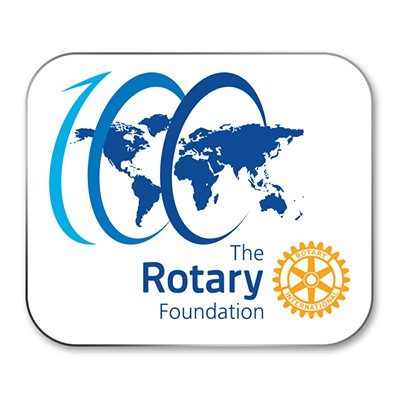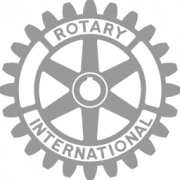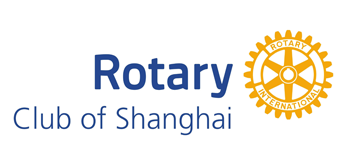General History
In its early years, Rotary clubs served as a respite for their members from the rampant corruption and fraud of the day. After a few years of conducting business with their fellow club members, Rotarians understood that one of the organization’s great strengths was the unusually high ethical standards of its members. Many believed that those standards should be embedded in Rotary’s identity.
The earliest Rotarians really had no choice but to make business ethics a priority. They joined the Rotary clubs for two reasons: to make friends and to make business contacts. If their business practices left anything to be desired, they were not likely to keep many of those friends for long. Today’s Rotarians maintain those principles, but with higher goals in mind.
The Seed of the Idea and the First Rotary Club
Let us rewind the scene back to the year 1900 in Chicago, U.S.A. For many years, the quotation from Ralph Waldo Emerson hung on the wall of the office of Paul Harris: “He who has a thousand friends has not a friend to spare.” It was in quest of friends – friendship – that Paul, at the turn of the twentieth century, began to think in terms of bringing business and professional men together for fellowship and for mutual benefit.
The seed of this idea came to rudimentary fruition on 23 February 1905, when Paul and three friends gathered for what was to be the first meeting of the first Rotary Club. Over the years that seedling of friendship has been nurtured, developed, and propagated, and has multiplied and radiated to, as today, more than 200 countries and geographical territories of the world. The idea that started in the mind and heart of one man has matured into a prestigious worldwide organization of more than 34,000 Rotary clubs with over 1.2 million members.
In discussing forces at work in business at the time Rotary came into existence, Chesley R. Perry, first secretary of Rotary International, said: “Giants of business were fighting over trade territories; competition was ruthless, and not only big business but all sorts of businesses, large and small, were then under the suspicion of being conducted on the basis of get all you can get and get it first. Into such a world Rotary was born … “
The four participants in the February meeting and those who soon joined them were for the most part young men (Paul Harris was 37) who were striving to establish themselves in business or profession. Paul called them “men of ordinary walks of life; … natural products of the times and subject to its usual frailties … all were friendly and congenial … each represented a recognized honorable vocation different from that of the idea that friendship and business could go hand in hand in strengthening both – and, not incidentally, to the individual business or professional benefit of those who participated.”
Thus, the first Rotary club was formed to provide an opportunity for fellowship and friendliness coupled with a basis for exchange of business between and among its members.
For Business Men of All Lines
The concept of Rotary as a mutual benefit arrangement may have contributed heavily to its early popularity and growth not only in Chicago, United States, but in its extension to other cities. However, in the unfolding of the story of Rotary, the idea of service to oneself and one’s fellow club members in a business sense gave way to the higher ideal of service and helpfulness to others in all aspects of life – and eventually service to all mankind.
The basis of one man from each separate and distinct business or profession was appealing; it afforded an atmosphere where discussion could be free from fear of competitors, where information could be obtained about other businesses and professions, and where the spirit of helpfulness in a business way was focused on each member as a representative of his vocation.
As other Rotary clubs were formed, some Rotarians were troubled by the candid emphasis on business “getting” and outside criticism of the selfish and self-serving nature of Rotary clubs and their members. The clubs attempted to clarify the matter for themselves and others. The Rotary Club of Seattle, Washington, U.S.A., the fourth club organized, developed a statement of objects in which it emphasized service to the community and particularly the promotion of high ethical standards in business.
In 1906, Donald Carter joined Rotary and immediately shifted the focus to service, calling for the “advancement of the best interests of Chicago.” The early Chicago Rotarians soon realized that their interest in their fellow Rotarians provided opportunities for helpfulness to others, and emphasis changed from “getting” to “giving” as they learned that business benefits flowed appropriately to those who demonstrated their interest in helping others.
To give expression to their outside service interests, the Chicago club adopted a third object “the advancement of the best interests of Chicago”, and the spreading of the spirit of civic pride and loyalty among its citizens.
The First Community Service
The first manifest interest of the Chicago Club in community service was its support of efforts to have public comfort stations installed in city hall. This was followed by a wide variety of community service projects. Without being aware of it, the early Rotarians were beginning to shape the characteristics and principles of the movement and organization that was to follow.
The year of 1908 was significant for Rotary. A young man of 36 by the name of Chesley R. Perry joined the Rotary Club of Chicago and immediately immersed himself in its philosophy and activities, particularly in the area of extension. He was destined to make vital contributions to Rotary and its development. Ches served as secretary of the National Board of Commissioners established for the organization of a national association of Rotary clubs. He did much to bring about the first convention (Chicago, 1910) and served as its chairman. Following the convention he was elected secretary of the newly formed National Association of Rotary Clubs. The organization benefited from his tremendous energies, his devotion, and his guiding hand for the next 32 years.
The National Association of Rotary Clubs formed in 1910
By 1910, there were 16 clubs from coast to coast in the United States. Until then, the individual clubs had been independent, though some did follow the pattern of the Rotary Club of Chicago. Feeling the need for unity of purpose and some uniformity of procedure for organizing additional clubs, the existing clubs assembled in convention. Sixty Rotarians and their wives attended the first Convention in Chicago. Delegates encouraged Rotarians to “promote honorable business methods.” The Convention formed the “National Association of Rotary Clubs”. Paul P. Harris was elected president and a constitution and by-laws were adopted with “Five Objects of Rotary Clubs”.
Arthur Frederick Sheldon, the president of a school of salesmanship, became a member of the Rotary Club of Chicago in 1908. He viewed business as a science and as a service to society. In addressing the first convention, he used the slogan of his school, now familiar to all Rotarians as “He Profits Most Who Serves Best”. Today, this is adopted as the secondary motto of Rotary with the wordings changed as “One Profits Most Who Serves Best” in respecting both genders.
By 1911, there were 28 affiliated Rotary clubs in the United States and 8 others, including one in Canada and one or more in Great Britain, which were organized but not yet affiliated. Rotary was about to become “international”.
The first issue of《The National Rotarian》was published, in newspaper form, in January 1911, by Secretary Perry principally to provide a vehicle for a message《Rational Rotarianism》, which Paul Harris wished to send to every Rotarian.
International Association of Rotary Clubs formed in 1912
In light of the affiliation of the clubs in Canada and Great Britain and the preliminary steps underway to organize Rotary clubs in other countries, the 1912 (Duluth, Minnesota, U.S.A.) Convention changed the name of the organization to the “International Association of Rotary Clubs” (萬國扶輪社協會).
After having served two terms as president of the association, Paul P. Harris was elected “President Emeritus” – an honor throughout his life.
Until 1912 clubs had developed their own constitutions and phrased their own objects. In a continuing effort at unity and method in the association and its constituent clubs, a Rotary Club Model Constitution and By-Laws were recommended.
Action of the 1912 Convention resulted in the adoption of the cogwheel as the emblem of the Association and the approval of its use on lapel buttons, pins, and stationery in royal blue and gold, the Association colors.
Immediately following the Convention, the Board of Directors provided for a uniform membership card and shortened the name of the official publication to《The Rotarian》in the form of a monthly magazine.
First Concerted Service of the Member Clubs
In early 1913, disastrous tornadoes and floods swept across the middle-western United States. A relief fund was raised by voluntary subscriptions to assist the victims – the first concerted service activity of the member clubs of the Association. Rotary appeared to be determined to rid itself of the selfish attitude which had seemed to predominate in the beginning.
The 1914 Convention adopted a resolution “for celebrating annually the anniversary of the birth of the first Rotary Club”. Clubs were urged to join with each other in such celebration – the first official encouragement for holding inter-city meetings. There was also a resolution “to ask all Rotary clubs to permit visiting Rotarians to pay for their own luncheons,” and an agreement to adopt a uniform Rotary flag.
Promotion of High Ethical Standards in Business and Professions
Promotion of high ethical standards in business and professions was assuming an important place in the principles and program of Rotary. In 1910, the newly formed National Association of Rotary Clubs created a Business Methods Committee, and in 1912, International Rotary President Glenn Mead proposed that the committee carve out a code of business ethics for “the advancement of business morality.” Three years later, “A Code of Ethics for Businessmen of All Lines” was adopted at the 1915 (San Francisco, California) Convention.
A Convention report stated that “the 1915 Convention will take the place in Rotary history as the time when Rotary principles became more clearly interpreted and Rotary practices more sharply defined and as the time when the task of blending these two into one harmonious working platform was successfully started.”
Beginning of The Rotary Foundation
At the 1917 Convention, President Arch Klumph called attention to the possibility of a future endowment for Rotary: “Carrying on, as we are, a miscellaneous community service, it seems eminently proper that we should accept endowments for the purpose of doing good in the world, in charitable, educational or other avenues of community progress; or such funds could be well used for the vast millions possessed by men in this country than that certain sums might be endowed to Rotary for the purpose of establishing Rotary clubs in all the nations of the world.”
The endowment fund initiated in the following months was the forerunner of The Rotary Foundation.
The Object of the Advancement of International Peace
At the First World War’s end in November 1918, clubs faced the challenge of reconstruction, particularly in international extension. Inquires about forming Rotary clubs came from many countries, and social and economic conditions provided ample opportunities for post-War community service activities.
Extension of Rotary to the Far East was also proposed and in action. On 1 October 1919, membership charter #545 was granted to Shanghai Rotary Club (上海扶輪社) – the first Rotary Club in the Republic of China (中華民國), and the second club in Asia following Manila of The Philippines.
With more than 2,500 in attendance, the 1921 Edinburgh Convention was a milepost in the maturation of Rotary. To emphasize the international thrust and influence of the Association, a new section was inserted in its objects: “To aid in the advancement of international peace and goodwill through a fellowship of business and professional men of all nations united in the Rotary ideal of service.”
A resolution to provide a permanent home for the headquarters of the International Association of Rotary Clubs was not adopted, but the wheel design of 24 cogs and six spokes was – as Rotary’s official emblem.
Rotary International
After two years of study and drafting, first by the constitution and by-laws committee, then by a special “Committee of 31” representatives of all districts, a draft of the Constitution and By-laws was adopted at the 1922 Los Angeles Convention, putting the Association on a solid organizational basis.
In another Convention action, the name of the Association was changed to “Rotary International” (國際扶輪).
The next several years was a period of continued growth, adjustment, and refinement of administrative procedures, the development and expansion of activities – and some “growing pains”. Rapid extension to areas where there were few Rotary clubs made communication difficult. A series of regional conferences was initiated: in Hawaii in 1926 for clubs in countries bordering the Pacific Ocean; in Tokyo, Japan, in 1928; in Sydney, Australia, in 1930, and later also in Manila, The Philippines, in 1935.
Organization of clubs in countries whose language was other than English created the need for translation of Rotary literature. With volunteer help, translations were made in Chinese, Czech, Danish, Dutch, Finnish, French, German, Hungarian, Italian, Japanese, Norwegian, Spanish, Swedish, and Yugoslav.
In 1927, Danish Rotarian Sven Knudsen initiated a youth exchange project between Denmark and the United States. The idea caught on quickly. That was the seed of today’s Youth Exchange program.
In 1928, the Convention empowered, authorized, and directed the board to acquire a site or building in Chicago – for a headquarters building owned by Rotary International – provided it would not necessitate an increase in dues or a special assessment. But it would be more than 25 years before Rotary International did indeed have its own headquarters building – in Evanston, Illinois, U.S.A.
In 1929, the erstwhile endowment fund was renamed “The Rotary Foundation” and provision for the operation and administration included in the constitutional documents. In 1930, the charitable Rotary Foundation awarded its first humanitarian grant of US$500 to the International Society for Crippled Children, which became “Easter Seals”.

The First 25 Years
With the close of the Silver Jubilee Convention in Chicago in 1930, Rotary had completed its first quarter century. It had been a period of birth, growth, development, expansion, definition, and organizational and administrative refinement. In those 25 years it has:
- Grown from 4 members in one club to 3,349 clubs, with more than 150,000 members in 62 countries on 6 continents;
- Established and promoted high standards of business practice including the adoption of an ethical code for all businessmen and leadership in writing codes of correct practice for specific business and professional undertakings;
- Conceived and developed its constitutional documents and the organizational and administrative procedures embodied therein and within that framework preserved the autonomy of the member clubs;
- Articulated its objects in broad avenues of service;
- Established The Rotary Foundation of Rotary International;
- Devised and adopted an emblem;
- Acquired 2 mottos – “Service Above Self” and “He Profits Most Who Serves Best”;
- Established and maintained the principle of classification of business and profession as the basis for membership in a Rotary club and provided for weekly meetings and for regular attendance to a prescribed degree as prerequisite to continued membership.
The Milestones Onward to the New Millennium
- 1932 Chicago Rotarian Herbert J. Taylor creates the Rotary ethics standard — The Four-Way Test.
- 1934 The first Council on Legislative is held, playing a central role in introducing the democratic process to many members. Shanghai Rotarian Dr. Fong Foo-Sec (鄺富灼博士) was appointed the representative from the Republic of China (中華民國).
- Dr. Fong Foo-Sec (鄺富灼博士), the first Chinese serves Rotary International as Director.
- 1937 Germany’s 42 clubs are forced to disband, along with Austria’s 11 clubs. Italy’s 34 clubs withdraw in 1938.
- Membership for Japan’s 41 clubs are terminated in 1940-1941, likewise for the 4 clubs in Manchuria (滿洲國) and 3 clubs in Formosa (Taiwan) (臺灣) which are administered under the Japanese Empire.
- 1940 Rotary International adopts the resolution, “Rotary Amid World Conflict”, to promote world order and peace. It serves as a model for the United Nation’s Universal Declaration on Human Rights.
- 1942 Amid bombs falling on London, Rotarians hold a conference of education ministers that lays the groundwork for UNESCO (The United Nations Educational, Scientific and Cultural Organization).
- 1945 More than 40 Rotarians serve as delegates, advisors, and consultants at the United Nations Charter Conference in San Francisco, U.S.A. Shanghai Rotarian Dr. V.K. Wellington Koo (顧維鈞博士), delegate of the Republic of China, the first man signs on the UN Charter. Nanking Rotarian Dr. Hsu Mo (徐謨博士), China, is one of the consultants on the United Nations Committee of Jurists.
- Dr. Chengting Thomas Wang (王正廷博士), of Chungking Rotary Club (重慶扶輪社), the first Chinese serves Rotary International as the 2nd Vice-President.
- 1947 Founder Paul Harris dies on 27 January. In his honor, Rotarians grant 18 Rotary Foundation Fellowships, the forerunner of the Ambassadorial Scholarship program. One of the recipients, Carl Ching-Te Wu, from the Republic of China is sponsored by Tientsin Rotary Club (天津扶輪社).
- 1951 Rotary International dissolves all 3 Rotary districts within the People’s Republic of China (中华人民共和国).
- 1952 Rotary International terminates membership of all Rotary clubs within the People’s Republic of China.
- 1957 Paul Harris Fellow Recognition (PHF) proposed to fund The Rotary Foundation programs.
- 1962 The first Interact Club, for ages 14-18, is formed in Melbourne, Florida, U.S.A.
- The World Community Service (WCS) program is launched, pairing clubs in developing countries with those that have resources to help.
- 1965 The Rotary Foundation establishes the Matching Grants program, supporting international service projects, and Group Study Exchange (GSE), which sends teams of young professionals abroad.
- 1968 Rotary launches Rotaract, for young adults. The first club is chartered in Charlotte, North Carolina, U.S.A.
- 1970 The Council on Legislation changes from an advisory to a legislative body, making it Rotary’s “parliament”.
- 1971 The Rotary Youth Leadership Awards (RYLA) program is adopted, providing training for youths in leadership and conflict resolution.
- 1978 Rotary creates Health, Hunger and Humanity (3-H) Grants to support large-scale humanitarian projects.
- 1980 The Rotary Foundation establishes an endowment, now called the Permanent Fund, to ensure its long-term effectiveness.
- 1985 Rotary launches the PolioPlus Program.
- President-Elect M.A.T. Caparas proposes Rotary village Corps, known today as Rotary Community Corps (RCC).
- 1989 At a triennial meeting in Singapore, the Council on Legislation votes to allow all Rotary clubs to admit qualified women.
- 1990 Preserve Planet Earth (PPE) is established on a pilot basis. More than 2,000 clubs adopt environmental projects during the Rotary year.
- 1993 The 500 millionth child is symbolically immunized against polio at the International Convention in Melbourne, Australia.
- 1994 The Western Hemisphere is declared polio-free.
- 2000 The highest delegation of Rotary International composes of President Frank J. Devlyn (戴甫靈), President-Elect Richard D. King (金恩), President-Nominee Bhichai Rattakul (陳裕財), General Secretary Edwin H. Futa (布田), etc. visits The People’s Republic of China and meets the State Council in Beijing.
- The western Pacific region is declared polio-free. The number of polio cases has declined 99{16a699102c5e1602fbeddd5c103b8604dc0849ec7fa4c09fb854334affab447b} since the Global Polio Eradication Initiative began in 1988.
- 2001 The 30,000th Rotary club is chartered.
- 2002 The first members of the first class of Rotary World Peace Fellows begin studies at the Rotary Centers for International Studies in peace and conflict resolution.
- The European region is declared polio free.
- Rotary eClub One – the world’s first web-based Rotary Club is chartered in District 5450, U.S.A.
- 2004 Council on Legislation adopted a resolution which emphasizes that “Rotary clubs continue to build upon their significant record of attracting and seeking out individuals who exemplify the high ethical standards of Rotary as we move into 21st Century and into our record of 100 years of service.”
- Dr. Gary C. K. Huang (黃其光博士), of Taipei Rotary Club (臺北扶輪社), Taiwan, the first Chinese serves The Rotary Foundation as Trustee.
- 2005 23 February Rotary celebrates its centennial.
- Rotary International agrees to open The People’s Republic of China as a “Rotary country”.
- 2006 Membership charters are granted to both modern Shanghai and Beijing Rotary clubs (上海/北京扶輪社) in the People’s Republic of China.
- Only four countries remain polio-endemic: Afghanistan, India, Nigeria, and Pakistan. Polio cases worldwide have dropped by 99{16a699102c5e1602fbeddd5c103b8604dc0849ec7fa4c09fb854334affab447b} since 1985.
- 2007 The Rotary Foundation celebrates millionth Paul Harris Fellows awards.
- 2008 The Rotary Foundation officially launches its effort to match a US$100 million challenge grant from the Bill & Melinda Gates Foundation to help eradicate polio. In 2009, Rotary receives another grant of $255 million from the Gates Foundation and launches Rotary’s US$200 Million Challenge to match a portion of the grants and further support efforts to End Polio Now.
- 2009 The 100th Annual International Convention is celebrated in Birmingham, England, United Kingdom.
- 2014 Dr. Gary C. K. Huang (黃其光博士), of Taipei Rotary Club (臺北扶輪社), Taiwan, the first Chinese serves Rotary International as President.
- 2017 The Rotary Foundation celebrates its 100 Years of Service.
Rotary is Building A Better World Tomorrow
Through the years, Rotarians have continued to promote those high ideals through a variety of means, such as The Four-Way Test, Vocational Service, classification talks, and other methods of coupling Rotary membership with business and professional standards. And today, over a century later, business ethics remains a cornerstone of the Rotary movement and as relevant as ever.
The roots of Rotary have stood the test of time. Today, a Rotary Club carries the mission “to encourage and foster the ideal of service as a basic of worthy enterprises”. This “ideal of service” is fostered in four avenues: (1) The development of acquaintance as an opportunity for service; (2) High ethical standards in business and professions, the recognition of the worthiness of all useful occupations, and the dignifying of each Rotarian’s occupation as an opportunity to serve society; (3) The application of the ideal of service in one’s personal, business, and community life; and (4) The advancement of international understanding, goodwill, and peace through a world fellowship of business and professional persons united in the ideal of service.
Rotary is a non-political and non-sectarian organization open to all people regardless of race, color, creed, religion, gender, or political preference. There are more than 34,000 member clubs worldwide, with over 1.2 million individuals called Rotarians have joined these clubs located in 200 countries and geographical territories.

Extended readings by the same author
(1) The Evolution of – Object of Rotary
(2) From “The Rotary Code of Ethics” to “The Rotarians Code of Conduct”
Prominent Rotarians
This is a collection of the profiles and archives of former Shanghai Rotarians who had exemplified his lives with the Object of Rotary.
Archive
This is a collection of the official documents, archives, project reports, images, etc. of the Rotary Club of Shanghai since the inception in 1919. We do collect here the news clippings and media reports regarding our activities, projects, and members’ profiles.
Roster
Media Clippings
 1919PDFThe Beginning of Rotary in China — Shanghai
1919PDFThe Beginning of Rotary in China — Shanghai
 1922PDFA Chinese Dick Whittington – Dr. Fong Foo-Sec
1922PDFA Chinese Dick Whittington – Dr. Fong Foo-Sec
 1924PDF“Over the Great Wall – Rotary Service storms the barricade of racial antipathy” by Arthur Melville
1924PDF“Over the Great Wall – Rotary Service storms the barricade of racial antipathy” by Arthur Melville
 1924PDFSome Prominent Chinese Rotarians
1924PDFSome Prominent Chinese Rotarians
 1995PDF“Confucian philosopher, faithful Rotarian – Percy Chu, the Rotarian behind the Bamboo Curtain” by Joaquin Nejia
1995PDF“Confucian philosopher, faithful Rotarian – Percy Chu, the Rotarian behind the Bamboo Curtain” by Joaquin Nejia
Constitution and By-Laws
Contact
Herbert K. Lau
(劉敬恒)
Club Historian
herbert@rotarychina.org
Hong Kong
+852 9310 4873
China
+86 1501 252 8073










